Beye-Rickhoff-Witberg-Stein Family

John and Jennie Beye came to the U.S. from Rotterdam in 1905. They likely ended up in Lake Forest because Jennie’s sister Cornelia and her husband Derk Bennes were here – Derk Jr. became a Lake Forest police officer. By 1910, the Beyes were listed in the census as in service in a private home, with John working as a gardener.

John and Jennie’s letters home must have painted a promising picture, because within a few years John’s younger brother Cornelius was eager to join them in Lake Forest. He came over in 1912 and intended his fiancée, Geertruida (or Gertrude) Rickhoff, to join him shortly. There was only one problem: under no circumstances were Gertrude’s protective parents going to allow their daughter to travel overseas unmarried and unprotected. But Cornelius Beye was just getting established, and certainly did not have enough money yet for a return voyage.

The solution was something more common among immigrant families than we might imagine: a marriage by proxy, or “by the glove” as the Dutch called it, because in early days the groom would send a glove and the bride and proxy would both hold onto it during the ceremony. Another Beye brother stood in for Cornelius at the wedding, and her parents satisfied, Gertrude joined her new husband in Lake Forest in 1913.

Before long, Cornelius was hired by the Arden Shore camp in Lake Bluff, where he and Gertrude were provided with a home in one of the cabins. Cornelius went on to serve as grounds superintendent there for 30 years, staying on as the mission of Arden Shore changed in focus from a summer camp for city mothers and children to a country school for gifted Chicago boys who’d had trouble with the law.
The rural life at Arden Shore took some getting used to for Gertrude, who had grown up as a city girl in Rotterdam. One day she saw a little black and white animal in the fields, and thinking it was a cute lost cat, approached and tried to pet it. One bonfire of clothing later, she learned about the local skunk population.
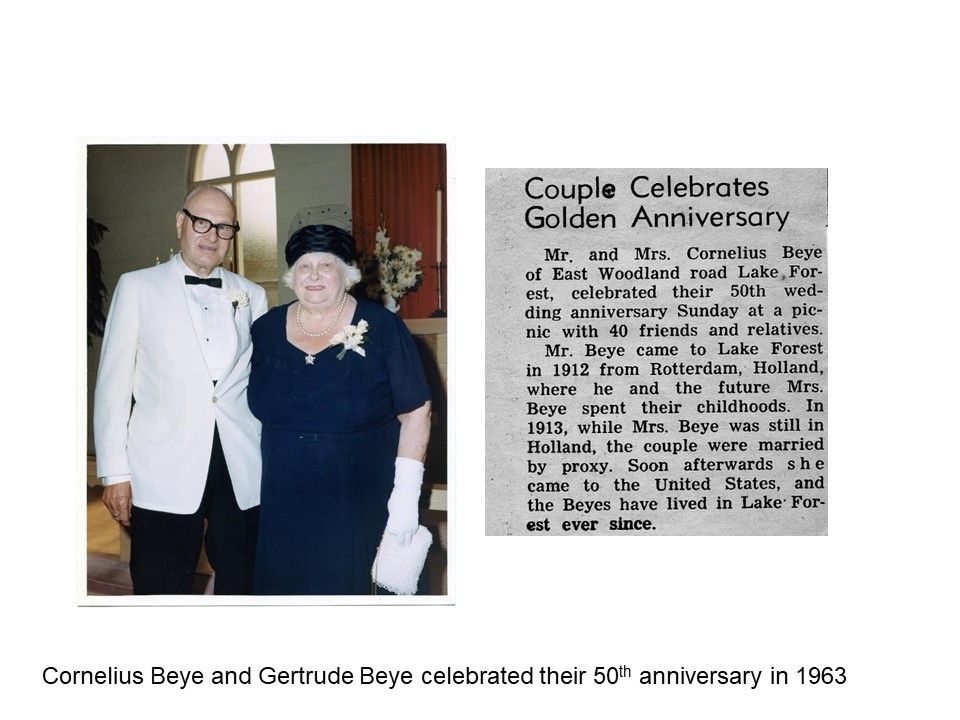
The Beyes were becoming established figures in the community. John’s wife Jennie died in 1923 following complications from an operation at Alice Home Hospital – he remarried Mary Donegan in 1928. Cornelius and Gertrude’s marriage – although it took place by proxy – lasted over 50 years.

In the 1920s, both John and Cornelius were inducted into the Masonic Lodge in Lake Forest. Here you can see Cornelius at an event for the Order of the Eastern Star at the building that’s now our Historical Society museum.

Meanwhile, another immigrant family would soon be looking to establish itself in Lake Forest. In 1923 Paul Stein came from Weitefeld in rural western Germany to an uncle in Pennsylvania, but quickly moved on to Kenosha, with its large German population. His younger brother Wilhelm, or Willie, followed soon afterward. According to Willie, the German community in Kenosha was so strong that on weekends, when they went to the local tavern, they didn’t speak English – they didn’t even speak German – they spoke the local regional dialect of their hometown.
By the 1930s, opportunities working on the estates had brought the Stein brothers and their wives to Lake Forest. Paul and his wife Helen later worked for a family in Glencoe who moved to Santa Barbara, California, and asked the Steins to come along. Willie and his wife Gertrude stayed in Lake Forest, eventually living out on Conway Road.
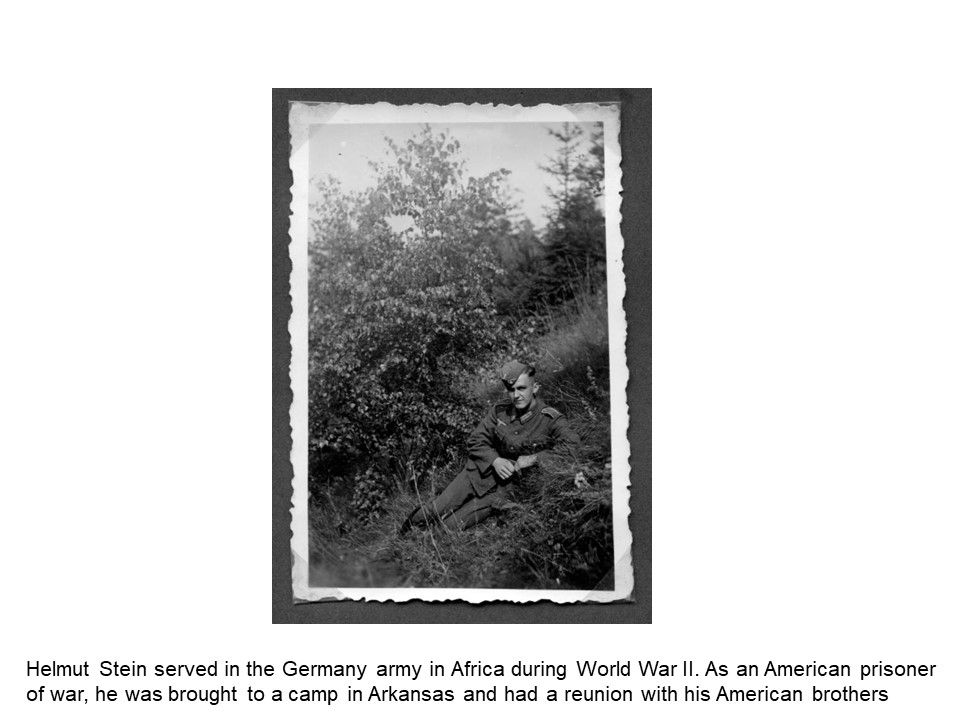
During World War II, Willie Stein served as a medic in the U.S. Army. His younger brother, Helmut, who still lived at home in Weitefeld, also served in World War II, but in the German army. Helmut was stationed in Africa, and eventually captured as a prisoner of war by U.S. forces. They sent him to a prison camp in Arkansas, where he picked cotton and learned English. Before he was sent back to Europe he was able to receive a visit from his American brothers Paul and Willie – an unexpected reunion.

After the war, Helmut decided to join his brothers in America. This ended up being a more complicated process than expected. Former soldier Helmut’s immigration came off smoothly, but his wife Anna had to wait for several months before she was approved to enter the U.S. Like nearly all the other girls of her age, she had served in a German youth organization during the war, which flagged her immigration status.

The devastation wrought by World War II on the cities and populations of Europe led many to migrate elsewhere. Kasparus Witberg, like many Dutch men of his generation, was forced by the Germans into a labor camp during World War II. When the war was over, he was granted freedom, but had to make his way home from Germany to Rotterdam with essentially nothing. His daughter later recalled that her father never really enjoyed camping, saying that he had already had enough of sleeping on the ground for a lifetime.
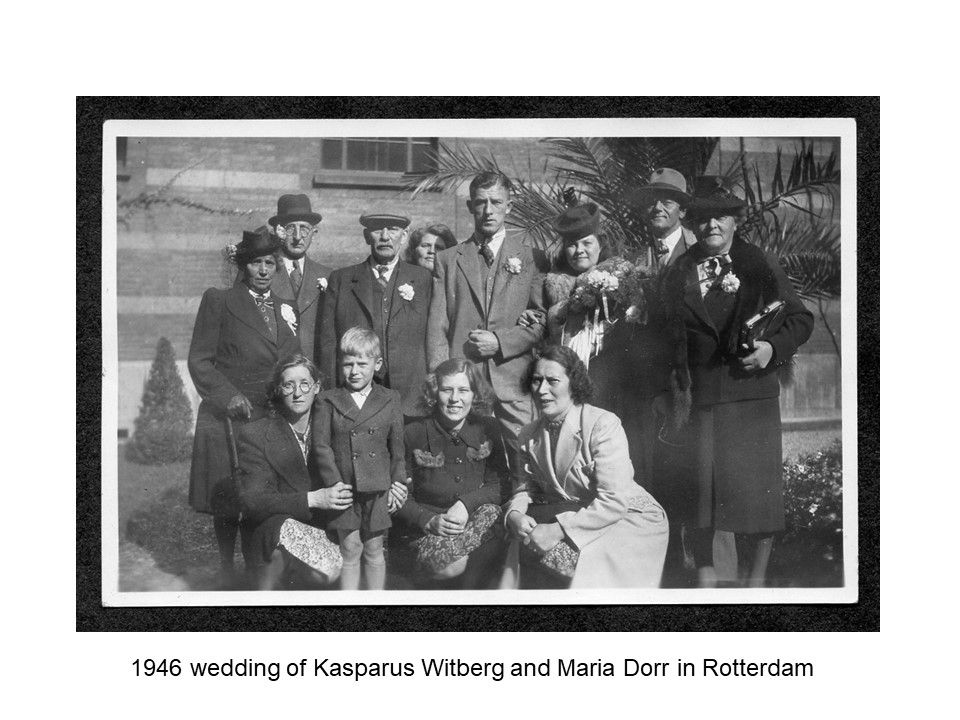
In 1946, Kas Witberg and Maria Elizabeth Dorr were married at City Hall in Rotterdam. After the ceremony, they along with their families had to pick up their food tickets so they had something to eat at the reception afterwards.

The bombed out city of Rotterdam offered few opportunities in the late 1940s, so the Witbergs, and their small daughter Jacoba, called Cobi, put themselves on the list with thousands of others to immigrate to the United States. Cobi recalls that since her parents couldn’t bring a lot of monetary wealth with them, but could bring as many trunks as they wanted, they bought the growing two-year-old tons of clothes in various sizes before the journey.

The Witbergs’ immigration was sponsored by Gertrude and Cornelius Beye. Gertrude was Maria’s aunt – her mother’s sister. On arriving in Lake Bluff, they went to live and work at Arden Shore, where Kas was a caretaker and Maria helped with laundry.

Within a few years, Kas Witberg was hired by the Lester Armour family, who lived off Arbor Drive in Lake Bluff. He was glad to move the family to a house on the estate and away from the Arden Shore cabins, where living conditions had been purposely rustic. Maria began working at the Village Market, and their daughter Cobi attended Lake Bluff schools and later Lake Forest High School.
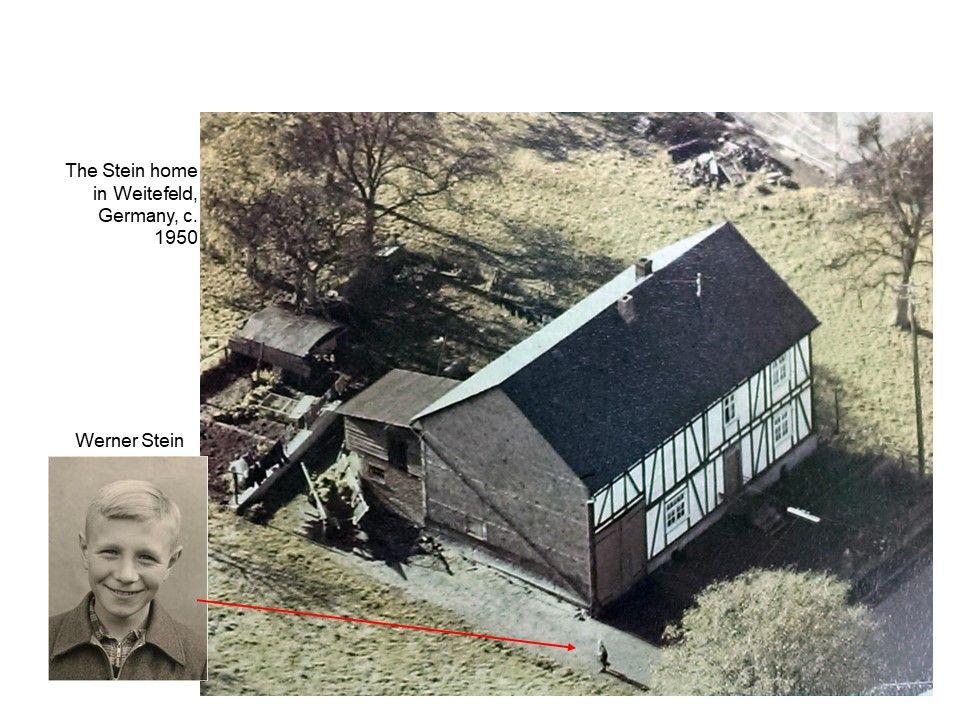
Soon another member of the Stein family would be joining his uncles in Lake Forest. Werner Stein grew up in Weitefeld, Germany, a rural community that dates back 1200 years. Life there could be harsh, especially after the war – there wasn’t much besides farming and mining. In this picture you can see an aerial view of the Steins’ home, built in the common style of the late 1800s: three stories of living quarters, a firewall, and the barn and stalls in the same building.

This photo of the entire family was taken just a few years before 19-year-old Werner left for the U.S., sponsored by his favorite uncle, Helmut.
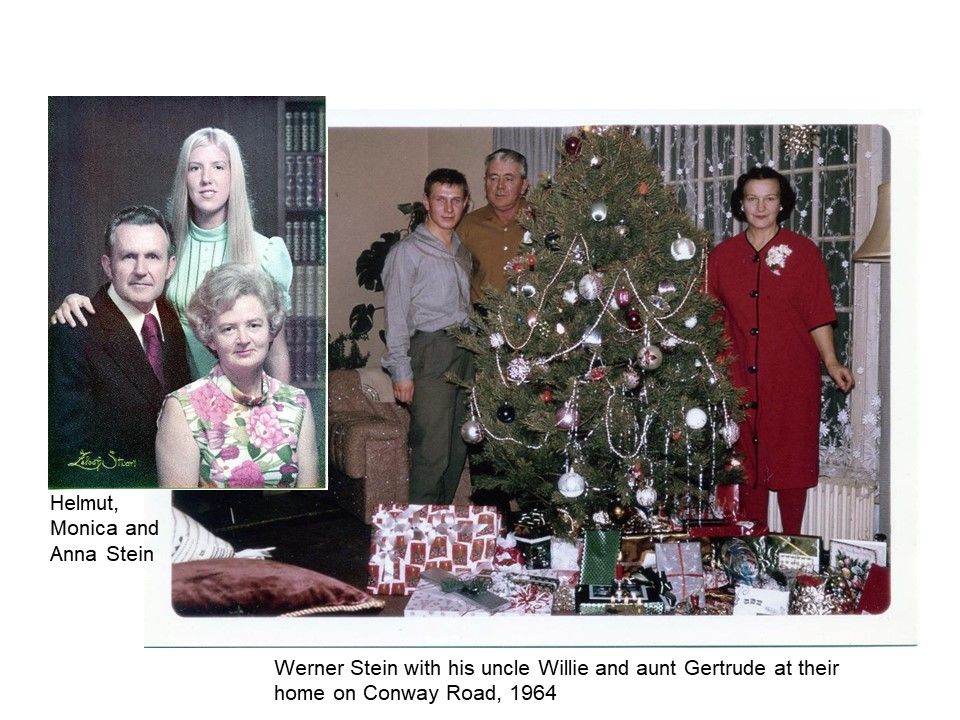
Initially Werner lived with Helmut and Anna Stein and their young daughter Monica on Mills Court. His first job involved working for the Leidy family as a gardener’s assistant. One of his tasks was to wash the family’s two Cadillacs every day – Mrs. Leidy somehow always knew if they’d been washed, even if they hadn’t been driven for a week.
Fortunately, there were communities of immigrants in the area to help welcome the newcomers into the fold. Werner had training as an electrician in Germany, and found an ad in a local German-language newspaper for electricians. Though he had to go through the apprentice program again, he found a job working for Mr. Hansen at Rotary Electric in Highland Park.
When he first started, Werner was still learning English, and he vividly remembers one of his early jobs at what he thought was just a normal house. Once he got the lights on, he was surprised to find a coffin and corpse beside him – the job was at the Spalding Funeral Home.

A talented soccer player, Werner joined a semi-pro team of Germans in Chicago, FC Hansa, who played games at the Oakbrook polo grounds. Later he played on a club made of several immigrant constituencies in Highwood, and then on the Lake Forest Rangers, seen here in the photo.
It was while he was playing pickup soccer, on the field behind Deerpath Middle School, that Werner Stein met Cobi Witberg. Her father Kas would play goalie, and sometimes Cobi would come to watch after she finished her shift working at Krafft’s drug store, though she was too young to have much in common with the other spectators, who were all wives of the players. She stood out to Werner, though, who came up to introduce himself after one game; the very next day found him buying a sports magazine, coincidentally, at Krafft’s. Cobi’s dad had to pretend to be surprised when she told him who had asked her out on a date.
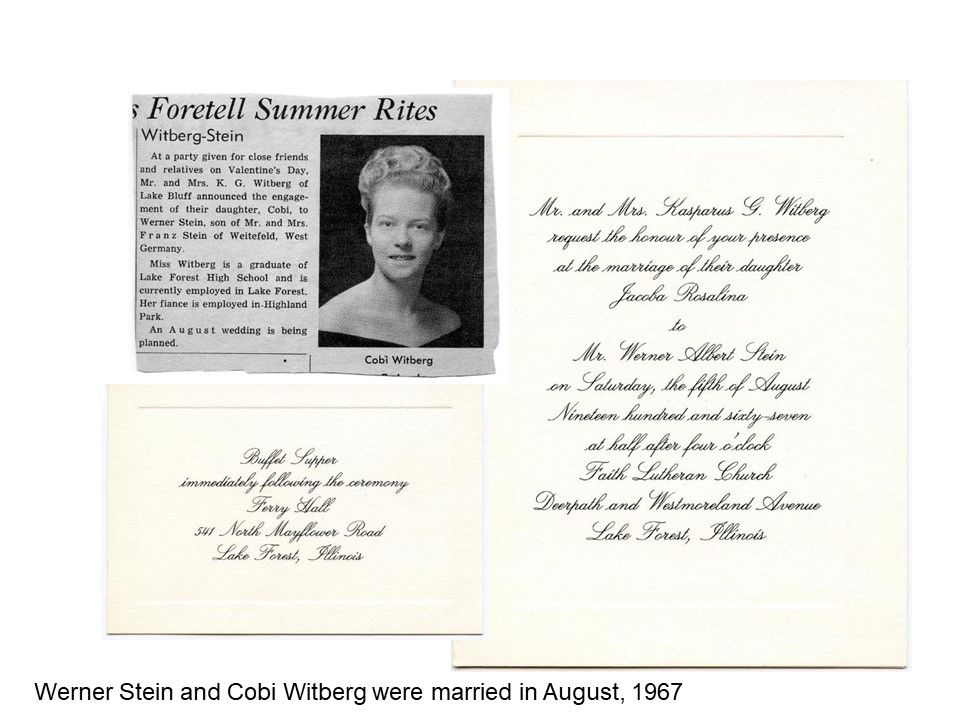
Werner and Cobi got married in 1967. The ceremony was at Faith Lutheran Church, and the reception was supposed to be at Knauz’s. Werner’s uncle Willie was friends with Karl Knauz, who offered the couple the banquet hall in the basement of the car dealership on Western.
Unfortunately, just six weeks before the wedding, they found out that fire code regulations had closed the Knauz banquet hall to outside events because there weren’t enough doors. Werner and Cobi had to scramble for another venue – they were mostly laughed at when they said the wedding was in six weeks.
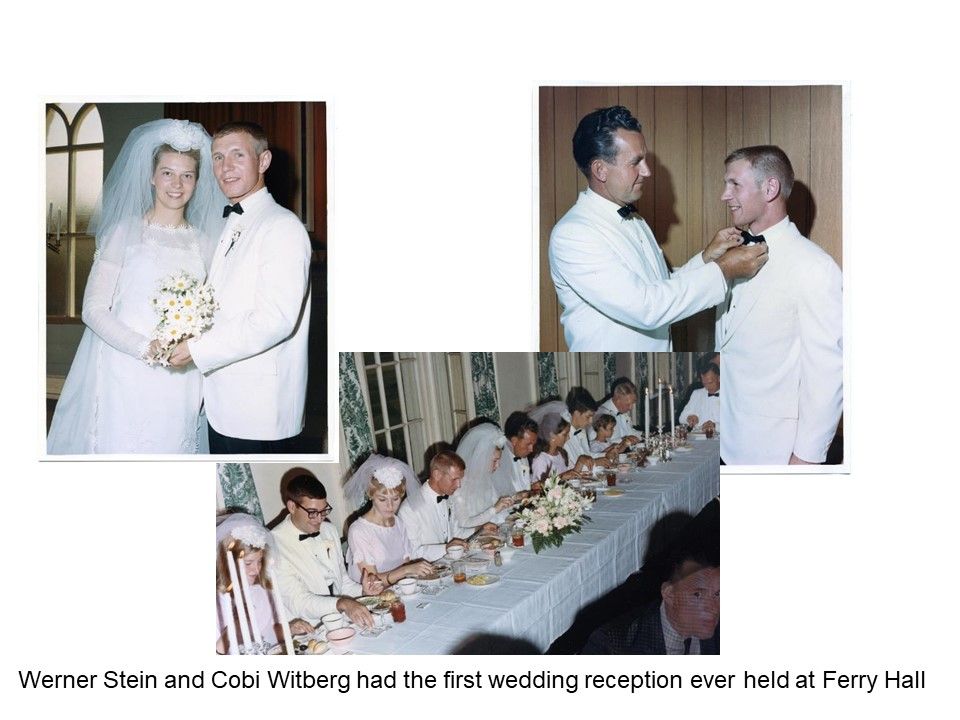
Cobi’s father saved the day – he had heard that Lake Forest Academy had just started hosting wedding receptions, and figured Ferry Hall was going to follow suit, which ended up being correct. So Werner and Cobi Stein had the first wedding reception ever held at Ferry Hall.

Werner’s cousin Monica, a bridesmaid in the wedding, liked the Ferry Hall venue so much that she swore her wedding would be there as well, a promise she fulfilled in 1975.

Werner and Cobi Stein settled in Lake Forest, first at a tiny apartment above O’Neill’s Hardware, and then in a house on Park Avenue, where their children Juliet and Bridget grew up. Cobi’s father continued to work for Mrs. Armour, the former Alexandra Galitzine, a Russian princess, after Mr. Armour’s death in 1970. When the filmmaker Robert Altman shot his award-winning movie A Wedding there in 1977, Werner Stein did some of the electrical work for the production. The family was invited to special 4th of July party Robert Altman threw for the cast and crew at Lake Forest Academy.

The Steins remained connected to their Dutch and German heritage. Here you can see Juliet Stein wearing the same Dutch costume in the Lake Forest Day parade in 1974 that her mother wore in 1957.

They also kept in close touch with relatives in Germany, exchanging visits so often that Werner’s cousin Monica Stein, who graduated from Lake Forest High School, ended up getting married to a man from the family’s German hometown of Weitefeld.

Bridget and Juliet Stein went to Sheridan, Deerpath, and Lake Forest High School – even West Campus for a time. They were involved in dance and swimming and volunteering at Lake Forest Hospital. Juliet also attended Barat College, graduating in 1998.

Though many of their stories have involved newcomers, the family’s roots in the community extend nearly 110 years, shedding light on how European immigrants have shaped Lake Forest and Lake Bluff for over a century.